Peacock Butterfly
- March 4, 2024
- 0 comment
The peacock butterfly, scientifically known as Aglais io, is a mesmerizing species cherished by nature enthusiasts worldwide. With its striking appearance and graceful flight, this butterfly captivates observers in meadows, parks, and woodlands across Europe and temperate Asia. Sporting vibrant hues of orange, brown, and black, the peacock butterfly’s wings are adorned with characteristic “eyespots,” resembling the plumage of its namesake bird.
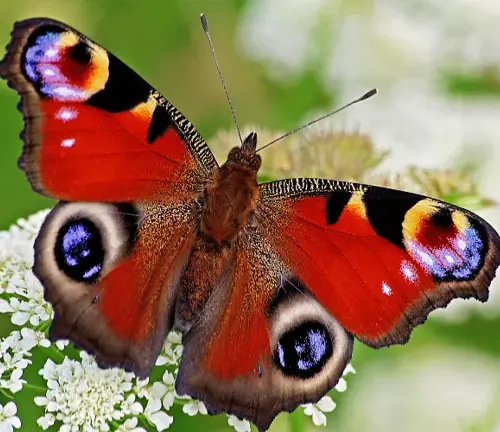
These markings serve a dual purpose: not only do they deter predators with their mimicry of larger creatures, but they also play a role in courtship displays during mating rituals. Peacock butterflies undergo a remarkable transformation, starting as eggs laid on the underside of nettle leaves, then progressing through larval and pupal stages before emerging as adults. As adults, they flit from flower to flower, sipping nectar and aiding in pollination, thus contributing to the ecosystem’s health and diversity. Despite their widespread distribution, peacock butterflies face threats from habitat loss, pesticide use, and climate change, underscoring the importance of conservation efforts to protect these iconic insects. With their symbolic significance in cultures worldwide and their vital ecological role, peacock butterflies continue to enchant and inspire admiration wherever they flutter.
| Specifications | Details |
|---|---|
| Scientific Name | Aglais io |
| Common Name | Peacock Butterfly |
| Habitat | Meadows, parks, woodlands |
| Distribution | Europe, temperate Asia |
| Wingspan | Approximately 55-65 millimeters (males tend to be larger) |
| Coloration | Vibrant hues of orange, brown, and black |
| Markings | Distinctive “eyespots” on wings |
| Life Cycle | Egg, larva (caterpillar), pupa (chrysalis), adult |
| Preferred Host Plant | Nettle leaves |
| Feeding Habits | Nectar of various flowers |
| Predators | Birds, spiders, parasitic wasps |
| Defense Mechanisms | Camouflage, eyespots on wings |
| Role in Ecosystem | Pollination, food source for predators |
| Conservation Status | Vulnerable to habitat loss, pesticide use, climate change |
| Cultural Significance | Symbol of transformation, beauty |
A Fascinating Creature of Nature
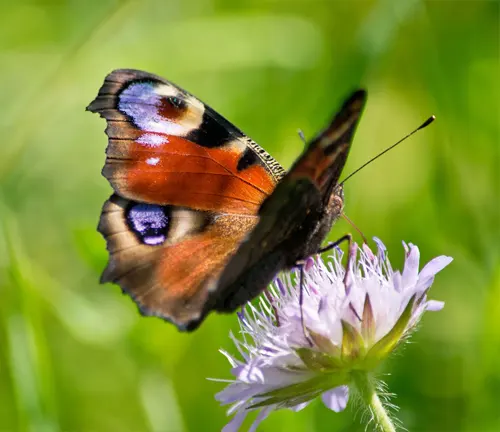
Peacock butterflies, scientifically known as Aglais io, are among the most captivating species in the world of butterflies. Their distinctive coloration and graceful flight patterns make them a delight to behold for nature enthusiasts and casual observers alike. In this article, we delve into the world of peacock butterflies, exploring their habitat, behavior, role in ecosystems, and much more.
Habitat and Distribution

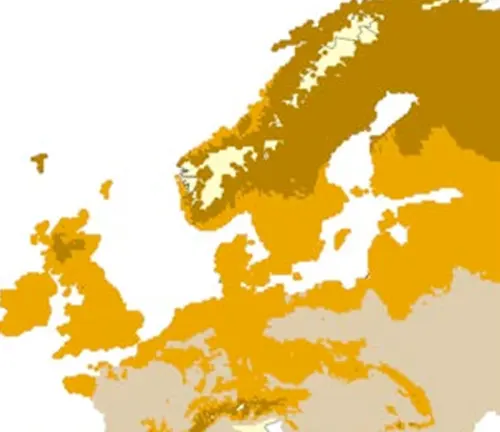
Peacock butterflies (Aglais io) are commonly found in a variety of habitats across Europe and temperate Asia. They thrive in diverse environments, including meadows, parks, woodlands, and gardens. These butterflies are particularly abundant in areas with an abundance of flowering plants, as they rely on nectar as a primary food source. Peacock butterflies can also be spotted in urban areas where suitable habitats are available, such as city parks and green spaces.
Life Cycle
The life cycle of a peacock butterfly consists of four main stages: egg, larva (caterpillar), pupa (chrysalis), and adult butterfly. This process, known as complete metamorphosis, is a remarkable transformation that allows the butterfly to undergo significant changes at each stage.
Egg: The life cycle begins when a female peacock butterfly lays eggs on the underside of nettle leaves or other suitable host plants. The eggs are small, round, and typically yellow or cream-colored. They hatch after about one to two weeks, depending on environmental conditions.
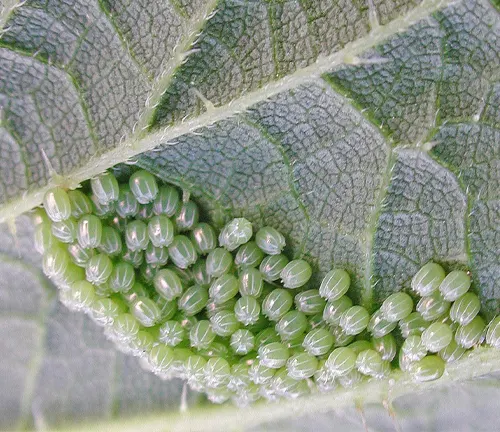
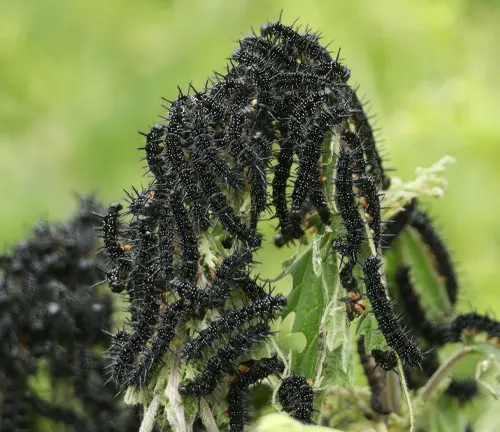
Larva (Caterpillar): Once the eggs hatch, they give rise to caterpillars, also known as larvae. Peacock butterfly caterpillars are black with rows of spiky protrusions and have a voracious appetite for nettle leaves. They undergo several molts, shedding their exoskeletons to accommodate their growing bodies.
Pupa (Chrysalis): After feeding and growing for several weeks, the caterpillar enters the pupal stage. It attaches itself to a suitable surface, such as a twig or leaf, and forms a protective shell called a chrysalis. Inside the chrysalis, the caterpillar undergoes a remarkable transformation, during which its body undergoes restructuring to prepare for life as an adult butterfly.


Adult Butterfly: Finally, the adult butterfly emerges from the chrysalis, completing its metamorphosis. Initially, its wings are soft and crumpled, but they quickly expand and harden as they dry. Once fully developed, the butterfly is ready to take flight and embark on its journey as a mature insect. As an adult, the peacock butterfly will engage in activities such as feeding, mating, and, in some cases, migration.
Behavior and Feeding Habits
Peacock butterflies exhibit fascinating behaviors and feeding habits that contribute to their survival and reproduction in their natural habitats.
Mating Behavior
During the mating season, male peacock butterflies engage in elaborate courtship rituals to attract females. These rituals often involve aerial displays and the release of pheromones to communicate their readiness to mate. Once a suitable mate is found, the pair will engage in copulation, after which the female will lay eggs on host plants.
Feeding Preferences
As adults, peacock butterflies primarily feed on the nectar of various flowering plants. They have a particular affinity for plants with brightly colored flowers, such as thistles, buddleia, and dandelions. By sipping nectar from these flowers, peacock butterflies obtain essential nutrients and energy needed for flight, reproduction, and other activities.
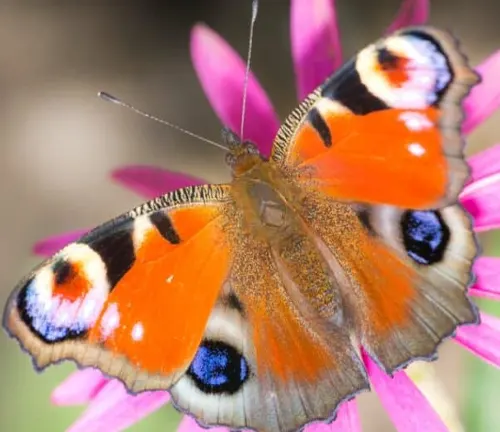
Territorial Behavior
Male peacock butterflies are known to exhibit territorial behavior, especially in areas abundant with nectar-rich flowers. They may defend territories against other males to ensure access to food sources and potential mates. Territories are often established in sunny, sheltered areas where butterflies can bask and forage efficiently.
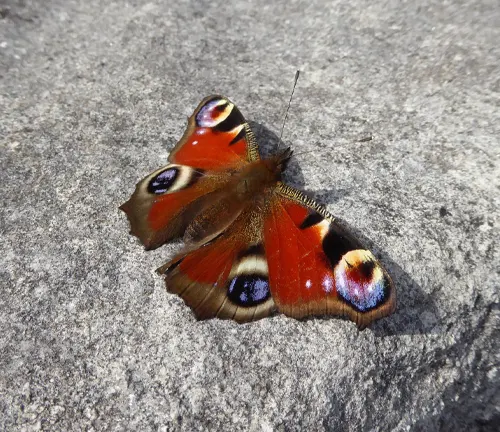
Sun Basking
Like many other butterfly species, peacock butterflies engage in sun basking behavior to regulate their body temperature. By perching with their wings spread open, they absorb warmth from the sun’s rays, which helps them maintain optimal body temperatures for flight and other activities.
Migration
While peacock butterflies are not known for long-distance migration like some butterfly species, they may exhibit seasonal movements in search of suitable habitats and food sources. These movements are typically localized and may vary depending on factors such as temperature, weather patterns, and resource availability.
Predators and Defense Mechanisms
Peacock butterflies face threats from various predators throughout their life cycle. To counter these threats, they have evolved a range of defense mechanisms that help them survive in their natural habitats.
Natural Predators
Common predators of peacock butterflies include birds, spiders, and parasitic wasps. Birds, such as sparrows and finches, often prey on adult butterflies, while spiders may capture them in their webs. Parasitic wasps target butterfly eggs or caterpillars, laying their eggs inside the host’s body, which serves as a food source for their developing larvae.
Camouflage
Peacock butterflies exhibit cryptic coloration that helps them blend into their surroundings, making it difficult for predators to detect them. When resting with their wings closed, their mottled brown and black coloration allows them to resemble dead leaves or bark, providing effective camouflage against potential threats.
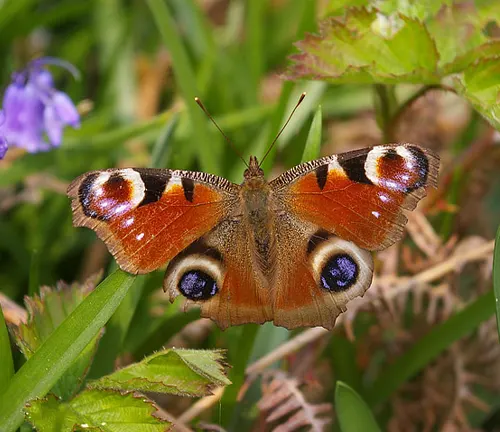
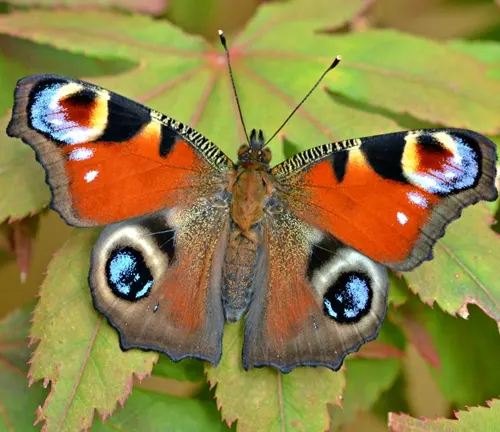
Eyespots
One of the most distinctive defense mechanisms of peacock butterflies is the presence of eyespots on their wings. These eyespots, which resemble the eyes of larger animals, serve to deter or startle potential predators. When threatened, the butterfly may suddenly flash its wings, revealing the eyespots and potentially startling the predator, giving the butterfly an opportunity to escape.
Flight
Peacock butterflies are agile fliers capable of rapid and erratic flight patterns, which can make them difficult targets for predators. They may use evasive maneuvers, such as sudden changes in direction or altitude, to evade capture by birds or other aerial predators.
Chemical Defenses
Some species of butterflies, including peacock butterflies, possess chemical defenses that make them unpalatable or toxic to predators. These chemical defenses are often acquired through sequestering toxins from their larval host plants, such as nettles. By incorporating these toxins into their bodies, butterflies become less desirable prey for predators, reducing their likelihood of being eaten.
Role in Ecosystem
Peacock butterflies play a crucial role in maintaining the health and balance of ecosystems in which they inhabit. Their presence and activities contribute to various ecological processes and interactions, making them an integral part of the natural world.
Pollination
As they visit flowers in search of nectar, peacock butterflies inadvertently transfer pollen from one flower to another, facilitating the process of pollination. This activity is essential for the reproduction of flowering plants, including many crops and wildflowers. By acting as pollinators, peacock butterflies help sustain plant populations and promote genetic diversity within ecosystems.
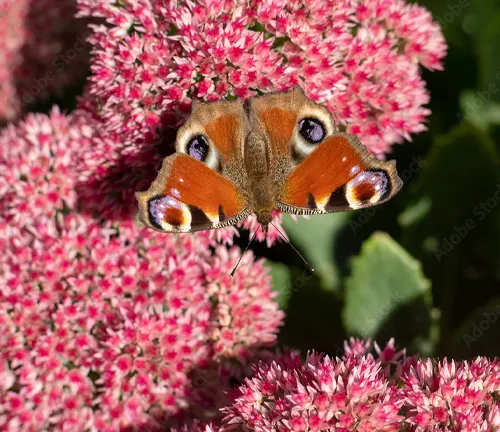
Food Source
Peacock butterflies serve as a vital food source for numerous predators, including birds, spiders, and other insects. Their presence in the food chain provides sustenance for higher trophic levels, contributing to the overall biodiversity and stability of ecosystems. By serving as prey for predators, peacock butterflies help maintain balance within ecological communities and support the survival of other species.
Indicator Species
The presence or absence of peacock butterflies can serve as an indicator of environmental health and habitat quality. As sensitive organisms, they are responsive to changes in their surroundings, including fluctuations in temperature, precipitation, and habitat disturbance. Monitoring populations of peacock butterflies can provide valuable insights into the ecological condition of their habitats and the effectiveness of conservation efforts.
Seed Dispersal
While not as significant as other pollinators, peacock butterflies may inadvertently aid in seed dispersal as they move from one flower to another. By transporting pollen and inadvertently carrying seeds on their bodies, they contribute to the dispersal of plant seeds across landscapes. This process helps maintain plant diversity and supports the establishment of new plant populations in different areas.
Ecological Interactions
Peacock butterflies participate in a wide range of ecological interactions, including predator-prey relationships, competition for resources, and mutualistic interactions with plants. These interactions influence the structure and function of ecosystems, shaping community dynamics and ecosystem processes.
Conservation Status
Peacock butterflies face various threats to their survival, including habitat loss, pesticide use, and climate change. As a result, their conservation status varies depending on regional factors and population trends. Understanding and addressing these threats is crucial for ensuring the long-term viability of peacock butterfly populations.
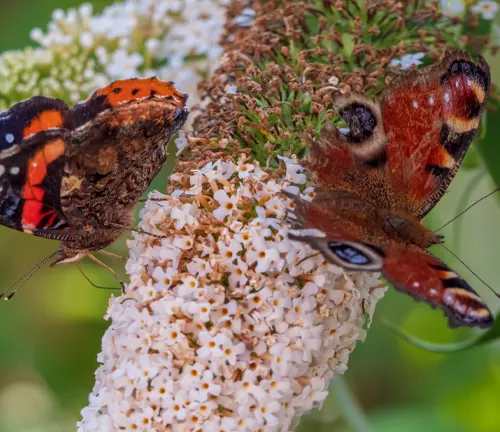

- Habitat Loss: One of the primary threats to peacock butterflies is habitat loss and degradation. Urbanization, agricultural expansion, and land development have led to the destruction of natural habitats, reducing the availability of suitable breeding and foraging grounds for these butterflies. Fragmentation of habitats further exacerbates this problem, isolating populations and limiting their ability to disperse and colonize new areas.
- Pesticide Use: The widespread use of pesticides in agriculture and gardening poses a significant threat to peacock butterflies and other pollinators. Pesticides such as insecticides and herbicides can contaminate nectar and host plants, leading to direct mortality or sublethal effects on butterfly larvae and adults. Additionally, pesticides may disrupt ecological interactions and reduce the availability of food resources for butterflies, further compromising their survival.
- Climate Change: Climate change poses a growing threat to peacock butterflies by altering temperature and precipitation patterns, disrupting seasonal phenology, and affecting the availability of host plants and nectar sources. Rising temperatures may also influence the distribution and abundance of predators and competitors, impacting butterfly populations indirectly. Moreover, extreme weather events, such as droughts and storms, can lead to habitat destruction and population declines.
- Invasive Species: Invasive species, such as aggressive plant species or non-native predators, can outcompete native plants or prey on butterfly eggs and larvae, further threatening peacock butterfly populations. These invasive species may disrupt ecological balance and alter habitat suitability, reducing the resilience of native ecosystems and exacerbating the impacts of other threats.
- Conservation Efforts: Despite these challenges, various conservation efforts are underway to protect and conserve peacock butterflies and their habitats. These efforts include habitat restoration and management, conservation breeding programs, public education and outreach, and policy initiatives to reduce pesticide use and mitigate climate change impacts. Additionally, citizen science initiatives and monitoring programs help track butterfly populations and identify conservation priorities.
Cultural Significance
Peacock butterflies hold cultural significance in many societies around the world, where they are revered for their beauty, symbolism, and mythological associations. Across different cultures, these majestic insects have inspired various beliefs, traditions, and artistic representations, contributing to their enduring legacy in human societies.
- Symbol of Transformation: In many cultures, peacock butterflies symbolize transformation, renewal, and spiritual growth. The metamorphosis from egg to caterpillar to butterfly is often interpreted as a metaphor for personal or collective change, with the butterfly emerging as a symbol of beauty and liberation from the constraints of the past.
- Beauty and Aesthetics: Peacock butterflies are admired for their vibrant colors, intricate patterns, and graceful flight. Their appearance has inspired artists, poets, and designers throughout history, who have incorporated their likeness into paintings, sculptures, textiles, and other forms of artistic expression. In some cultures, peacock butterflies are considered symbols of aesthetic beauty and are celebrated for their role in enhancing the natural world’s splendor.
- Folklore and Myths: Across different mythologies and folklore traditions, peacock butterflies are often associated with stories of transformation, rebirth, and divine intervention. In some cultures, they are believed to be messengers of the gods or spiritual guides that bring messages of hope and renewal to those who encounter them. In other traditions, they are depicted as symbols of good fortune, protection, or eternal life.
- Spiritual Significance: Some indigenous cultures view peacock butterflies as sacred beings with spiritual significance. They may be regarded as guardians of sacred sites, intermediaries between the earthly realm and the spirit world, or manifestations of ancestral spirits. Rituals and ceremonies may be conducted to honor and appease these revered creatures, seeking their blessings and guidance in various aspects of life.
- Literary and Cultural References: Peacock butterflies have been referenced in literature, poetry, and mythology across diverse cultural contexts. Their presence in literary works often serves as a metaphor for themes such as transformation, freedom, and the ephemeral nature of life. Additionally, they may appear in folk songs, proverbs, and oral traditions, where they symbolize beauty, resilience, and the interconnectedness of all living beings.
Different Species
European Peacock
(Aglais io)
This is the most well-known species referred to as the “peacock butterfly.” It is characterized by its vibrant orange and black wings adorned with prominent eyespots.
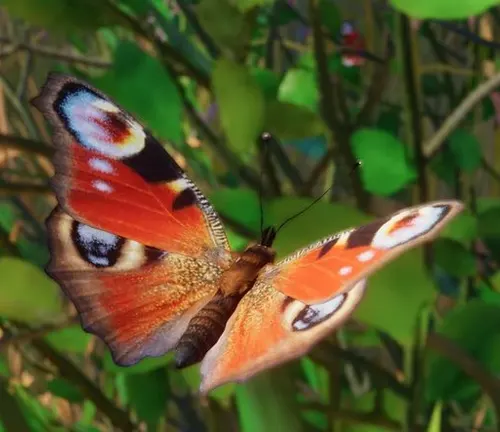
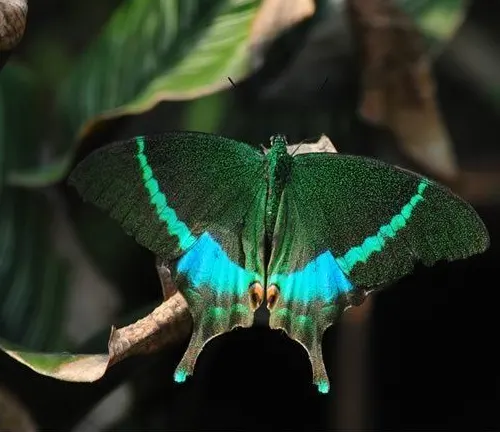
Indian Peacock
(Papilio polyctor)
Found in South and Southeast Asia, this species features iridescent blue and green markings on its wings, reminiscent of the plumage of a peacock.
Malachite
(Siproeta stelenes)
While not commonly referred to as a “peacock butterfly,” the Malachite butterfly boasts stunning green and black wings with patterns resembling peacock feathers.


Peacock Swallowtail
(Papilio blumei)
Native to Indonesia, this butterfly species showcases brilliant blue and green hues on its wings, resembling the colors of a peacock’s tail feathers.
Peacock Pansy
(Junonia almana)
Found in South and Southeast Asia, this species has wings adorned with intricate patterns and vibrant colors, reminiscent of the peacock’s plumage.
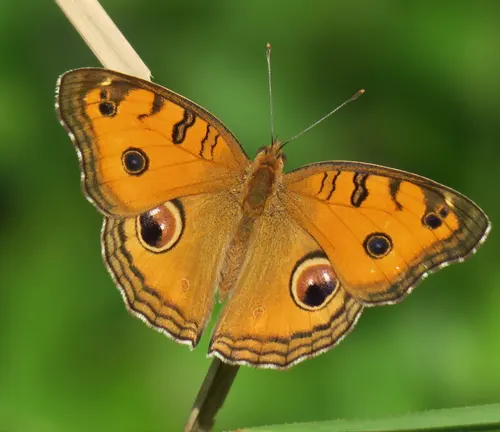
Frequently Asked Questions (FAQs)
- What is the scientific name of the peacock butterfly?
The scientific name of the peacock butterfly is Aglais io. - How long do peacock butterflies live?
Peacock butterflies typically live for 6 to 11 months, depending on environmental factors and predator pressure. - Can peacock butterflies migrate?
While peacock butterflies are not known for long-distance migration like some butterfly species, they may exhibit seasonal movements in search of suitable habitats and food sources. - What do peacock butterfly caterpillars eat?
Peacock butterfly caterpillars primarily feed on the leaves of nettle plants, which serve as their preferred host plant. - Are peacock butterflies endangered?
Peacock butterflies are not considered endangered; however, they may face threats from habitat loss, pesticide use, and climate change in certain regions. - How can I attract peacock butterflies to my garden?
To attract peacock butterflies to your garden, consider planting a variety of nectar-rich flowers such as lavender, marigold, and verbena. Providing sheltered resting spots and avoiding the use of pesticides can also help create a welcoming environment for these majestic insects. - Do peacock butterflies hibernate?
Yes, peacock butterflies hibernate as adults during the winter months, seeking sheltered locations such as tree hollows or buildings to survive the cold temperatures. - What are the predators of peacock butterflies?
Predators of peacock butterflies include birds, spiders, and parasitic wasps, which may prey on eggs, caterpillars, or adult butterflies. - How do peacock butterflies defend themselves?
Peacock butterflies defend themselves primarily through camouflage and the presence of eyespots on their wings, which resemble the eyes of larger animals and deter potential predators. - What is the difference between male and female peacock butterflies?
Male peacock butterflies typically have brighter and more vibrant coloration than females. Additionally, males have a dark scent patch on their forewings, which is used during courtship displays. - Where can I find peacock butterflies in the wild?
Peacock butterflies can be found in various habitats, including meadows, parks, woodlands, and gardens, across Europe and temperate Asia. - How many eggs does a female peacock butterfly lay?
A female peacock butterfly can lay up to 400 eggs during her lifetime, typically depositing them on the underside of nettle leaves. - What is the significance of the eyespots on peacock butterfly wings?
The eyespots on peacock butterfly wings serve multiple purposes, including deterring predators by mimicking the eyes of larger animals and potentially confusing or startling attackers. - Do peacock butterflies undergo metamorphosis?
Yes, like all butterflies, peacock butterflies undergo complete metamorphosis, transitioning through four distinct stages: egg, larva (caterpillar), pupa (chrysalis), and adult butterfly. - Can peacock butterflies be kept as pets?
While peacock butterflies are captivating creatures, they are best observed and appreciated in their natural habitats and are not suitable for keeping as pets due to their specialized dietary and environmental needs.



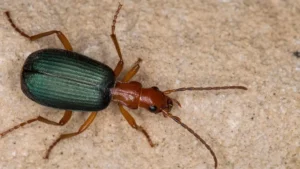

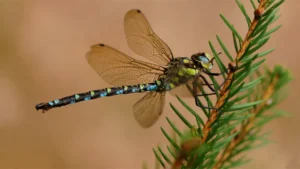


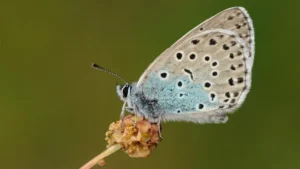


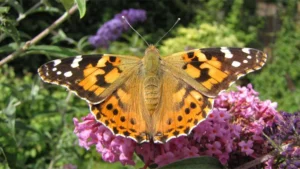
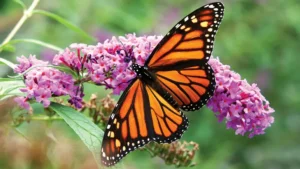
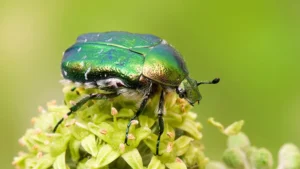
Leave your comment